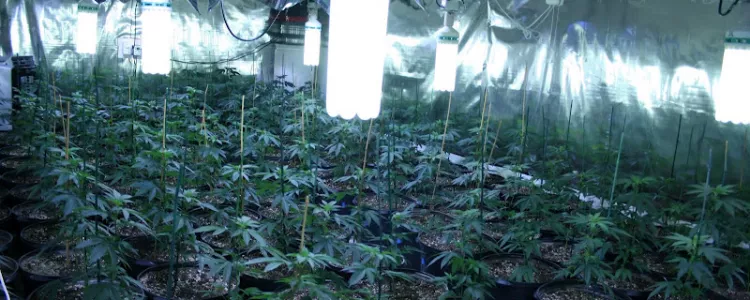-
Proper Lighting: Cannabis plants require a lot of light, so make sure you provide them with enough. Use high-intensity lights such as LED or HID lights and provide enough light exposure for 12-18 hours a day.
-
Proper Air Circulation: Adequate air circulation helps prevent disease and mold from forming, and also helps the plants grow healthier. Use fans to create air movement and ensure proper ventilation in your grow room.
-
Optimal Temperature and Humidity: Cannabis plants grow best at temperatures between 68-77°F, with a relative humidity of around 40-60%. Make sure to monitor temperature and humidity levels, and adjust as necessary.
-
Use High-Quality Soil: Good-quality soil is crucial to the health and growth of your plants. Use a soil mix that is well-draining and rich in nutrients.
-
Watering: Over-watering can lead to root rot, while under-watering can slow down growth. Make sure to water your plants just enough to keep the soil moist, but not water-logged.
-
Nutrient Management: Cannabis plants require specific nutrients at different stages of growth. Make sure to provide them with the right balance of nutrients to promote healthy growth and optimize yields.
-
Pest and Disease Management: Monitor your plants regularly for signs of pest and disease problems. Address any issues promptly, using organic or chemical methods as necessary.
-
Proper Pruning and Training: Proper pruning and training can help increase light exposure and air circulation, improve yields, and make harvesting easier.
-
Cleanliness: Maintaining a clean and hygienic grow room is crucial to the health of your plants. Sanitize your grow room regularly to prevent the spread of disease and pests.
-
Monitoring and Record Keeping: Keep track of important factors such as temperature, humidity, nutrient levels, and plant growth, and make adjustments as necessary. This will help you optimize your growing conditions and troubleshoot any problems that may arise.
10 Tips for Growing Cannabis Indoors!
2023-02-11 Reefer Man Blog Permalink
Growing cannabis indoors can be a challenging process, but by following these healthy Indoor Growing practices, you can maximize yields and ensure a successful and bountiful harvest.

Share to
